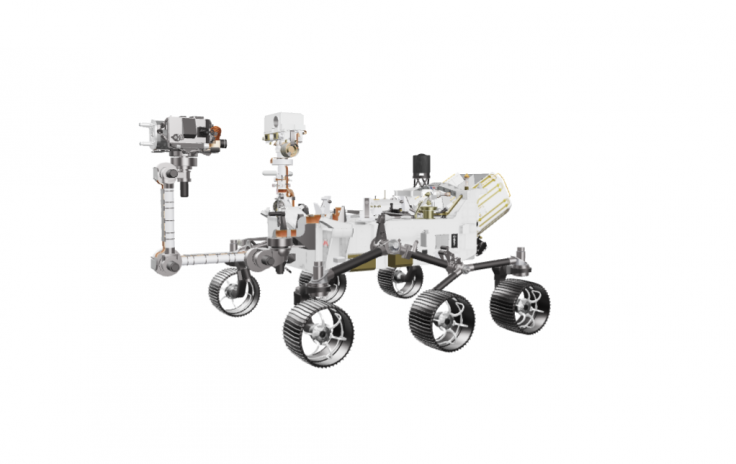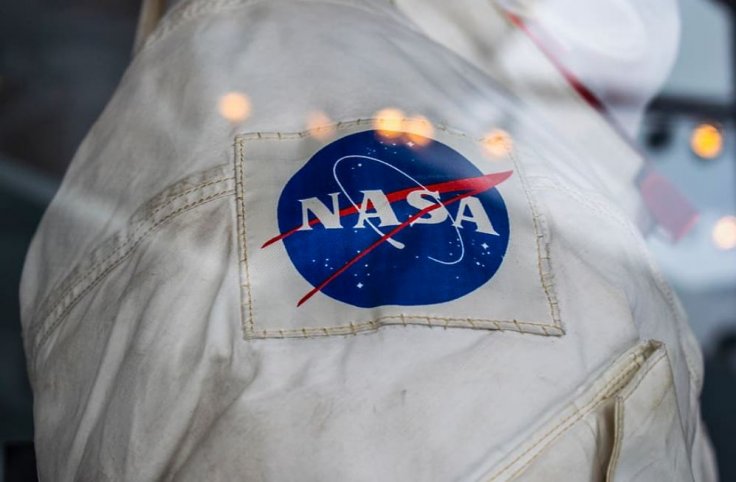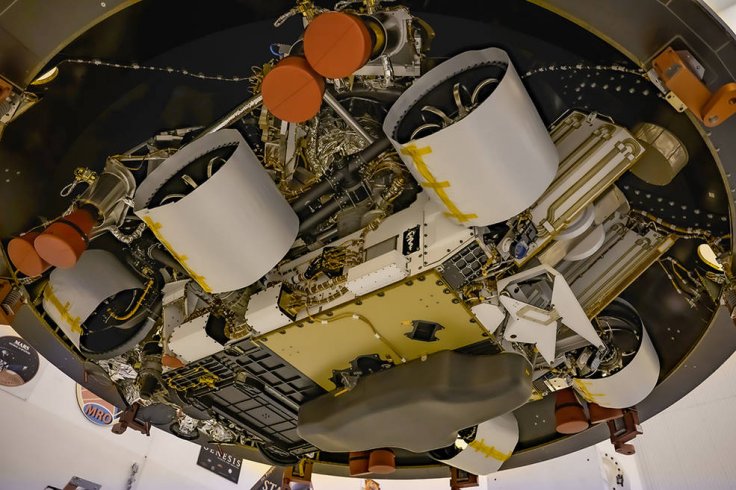Currently the world is obsessed with cleanliness and hygiene and rightly so, as following the global pandemic of COVID-19 that might as well be the only thing that'd be able to save lives. While here on our home planet we are still struggling with containment, quarantine, masks and preventing the virus from getting transmitted; we should probably take a page out of NASA's handbook on the same.
Despite a global pandemic, the American space agency not only launched the $2.4 billion Mars Perseverance Rover to our rocky neighboring planet but also achieved a successful landing last week and Earthlings are still brimming with that joy. The job of the Mars rover is to search for microscopic life and collect rock and soil samples from the Red Plane; which we are hopeful and quite sure that Perseverance will do effectively; however, what it will not do is introduce Earth's microscopic lives to Mars or in other words, infect Mars' environment with COVID-19 virus and the likes of it.
Cleaning Practices, Sanitary Procedures and Sterilization Methods

NASA has been at it for decades. Practices, procedures and methods followed by the space agency has made it more than 100% guaranteed that the rover will not have even a shred of anything that can potentially compromise the mission to our celestial neighbor.
"Viruses, e. coli, all the things we find on our skin, they are all puny wimps," NASA Planetary Protection Engineer at Pasadena's Jet Propulsion Laboratory, Moogega Stricker told Popular Mechanics. According to her, the efforts started seven years ago when the mission began and everything that has been done since then has made sure that the rover is resilient against any and every kind of contamination.
However, it has not begun with this particular mission, ever since humans started reaching for the stars, they have tried not to contaminate the space with our germy nature.
"We are a cesspool of bacteria. But it's our job to protect Mars from us [humans]," says Stricker; ironically about the planet humans, one day, aim to colonize.
How And Where The Obsessive Cleaning Started For Good?

As we protect all things celestial from Earth's germy nature; we also make sure that none of the 'out-of-the-world' contamination enter and affect the environment of the Earth as well. Planetary protection is the concept of preventing just that - biological cross contamination.
According to the "Outer Space Treaty", signing nations must "conduct exploration of [the moon and celestial bodies] so as to avoid their harmful contamination."
Small Trivia: "Outer Space Treaty" was signed by the United States, Soviet Union, and the United Kingdom in 1967, about two years before the humans put their first step on moon. Since then, hundreds of nations have all signed and became a part of the treaty.
As we know from being on Earth, our ecosystems are highly sensitive and susceptible to change. If some microbes, even the ones assumed to be harmless, get introduced to an environment where they are unknown, it could bring forth catastrophe or even the end of the world.
Since 1957, when along with Sputnik the space age also took off, NASA started several trial and errors in a bid to protect space from Earth and vice versa.
NASA first commanded a complete "sterilization" of all things going to space in 1959, when the American space agency was getting ready to launch its first manned space missions. It meant, each and every microorganism in and on the spacecraft had to be removed by hook or by crook; which was and still is not an easy feat to achieve.
The First Attempt

NASA then sought advice and help from the food industry for their methods, since they had the best experience in avoiding contamination.
However, as it turned out, all the planning and efforts did not pay off. The experts at the space agency attempted to completely sterilize the space vehicle by putting it under extreme, life-killing heat during their unmanned Ranger program in the 1960s.
As Erik Conway, historian at NASA's Jet Propulsion Laboratory in Pasadena, California, puts it, "They baked them...at very high temperatures. That proved to be very damaging to the electronics." While it did solve one problem at hand; it essentially created a new one. Many blamed this "baking" process for the performance failures of the Rangers.
NASA admits that frying the electronics was probably not a good idea. Possibly, that's why of Ranger 3 missed its lunar target by tens of thousands of miles, Ranger 4's melting debris inside made it crash into the moon and Ranger 5 faced a power failure.
Guns And Spacecraft

Next time, in the 1970s, NASA turned to the weapons industry to achieve the feat. The idea of clean rooms entered the venture. "Missiles also have to be kept clean. They have very high acceleration and wouldn't want particles floating around inside of the electric compartments that might get stuck," states Conway.
NASA develops these clean rooms through obsessive monitoring, extensive filtration systems, consistent cleaning with disinfectants, hydrogen peroxide and alcohol. Add to that an intricate decontamination process takes place for the humans, who work there.
"Technicians and engineers that work in the room have to shower the night before, so that the oils on their skin can form and they are less likely to shed skin. And also no perfumes, shampoos, lotions, or white deodorant... there's concern about the volatiles (chemical compounds with low boiling points) that could condense on the metal tubes," Says Roger Francis, High Bay 1's facilities manager.
The Story Of 11,601 Swabs And 2,543 Wipes

Now, in order to keep Mars protected; NASA performed robust sampling and testing to make sure that the Perseverance Rover remains clean. By May 2020, they had collected 11,601 swabs of the vehicle and 2,543 wipes; which is massive compared to the 3,208 swabs and 942 wipes that they had collected throughout the entire course Curiosity mission in 2011.
Due to the pandemic, Stricker said, the approach changed quite a bit. She had to make sure that the folks do not interact with each other unless absolutely necessary. They had to be equally meticulous about themselves as the spacecraft.
Today NASA has realized that killing everything on and in the spacecraft is impossible. "We don't build a completely sterile spacecraft. That's ridiculously impossible. But if you take all those microbes [on the craft]... it won't even fit on the lens of your cell phone camera," quips Stricker, which, we have to admit, is mighty impressive.
Protect Mars From Humans

However, now what worries Stricker is manned mission to Mars, which would possibly take place within the next decade. There's no way that it's possible to control the microorganisms that sheds off of us all the time. Humans can't be baked or fried, kept locked in a clean room for months or even years or wiped down with disinfectants thousand times a day. So, it appears that protecting Mars from humans might end up being a tougher mission for NASA than putting them on the rocky Red Planet on the first place.
However, NASA is sure to do what it always does – try, learn, succeed and boldly go where no man has gone before.









